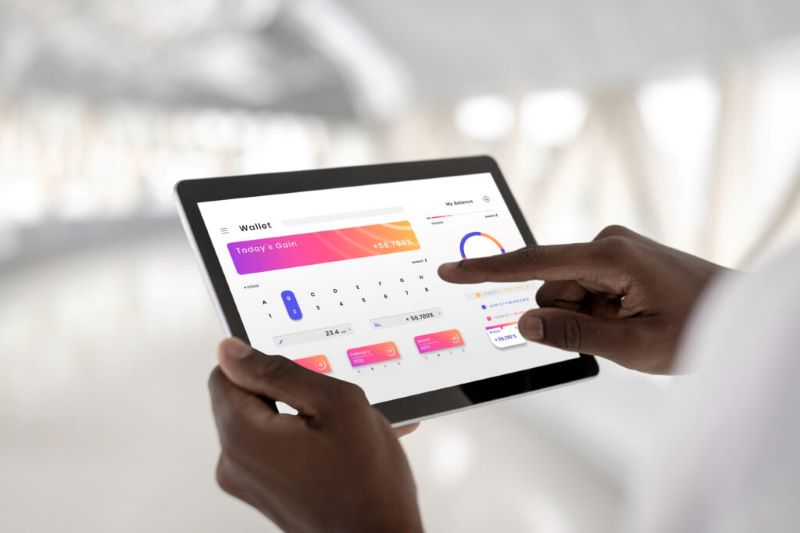Go vs Python: Which is Better for Scraping
Web scraping is a powerful method of collecting large amounts of data from the internet. By using web crawlers and automated algorithms, businesses can quickly collect all sorts of structured and unstructured data such as product reviews, pricing information, or contact details for potential leads. With this vast amount of insight literally at their fingertips, small to mid-sized businesses now have greater access to valuable market intelligence that can help inform important business decisions. However, for these enterprises to take full advantage of web scraping capabilities, they must understand the technical aspects involved which may require some familiarity with programming languages like Golang or Go vs Python.
These widely used platforms provide developers with powerful tools specifically tailored towards developing sophisticated applications but are not limited solely in implementing various tasks related to web crawling activities either. When it comes down to making informed decisions on which platform might be better suited for unique project needs, each language provides its own distinct benefits. It’s critical that you become familiar with how they compare against one another before making any commitment given their time and resources constraints.
This article will compare Go vs Python and their features, highlight technical considerations that small to mid-sized businesses should keep in mind when selecting a platform for their data collection goals, and delve into any tools or services available specifically for these language developers.
Python

Python is a powerful and versatile programming language. It is widely used in many fields worldwide, from web development to data science. Its features make it easy for beginners to learn and for developers with different levels of experience to create powerful applications quickly using Python libraries, frameworks, and more.
Some of the most prominent uses cases of Python are:
- Web development: Python has an extensive selection of web frameworks that facilitate rapid application development by allowing developers to quickly create websites or modules within websites without having too much coding knowledge. Django, for example, helps in creating full-featured web applications automatically incorporating database access code such as SQLAlchemy or MongoDB (if desired).
- Data science and analytics: One of the most notable Python strengths from a technical standpoint is its high-performance numerical computation capabilities and excellent object-oriented modeling approaches. Python allows researchers to process large datasets efficiently while being comparatively better at visualizing results and making storytelling out of complex relationships discovered within dataset analyses much easier. The SciPy library enables you to take the statistical analysis further via machine learning algorithms offering performant predictive analytics implementation when dealing with big data sets.
- Automation scripting and system administration: Developing scripts within python can provide a great way to automate routine tasks. Once set up, many no longer require human intervention, that is, manually entering information into a system. Python can also be used to write scripts for assisting with troubleshooting or maintenance tasks. It makes complex commands easier and faster to run by automating them instead of typing them manually each time.
- AI-based developments: With its comprehensive set of APIs, from simple neural network layers created with TensorFlow library (and many others), Python helps developers create sophisticated AI applications quickly and reliably. Some well-known applications include predictive modeling or facial recognition systems powered by a Convolutional Neural Network algorithms implementation through Keras library within Python code.
Python for web scraping
Web scraping is definitely included in the wide range of applications for the open-source programming language that is Python. It’s easy to learn and use, yet powerful enough to allow for complex data collection activities. Python performance is certainly reliable enough for small to mid-sized businesses for extracting meaningful data from the web in various formats. With the right tools and knowledge, small-scale organizations can effectively access publicly available information from almost any website at no extra cost. This makes it one of the most valuable resources on offer today when it comes to gathering large amounts of relevant raw material on which business decisions are based.
One of the many Python strengths that many businesses enjoy is its flexibility — allowing users to tailor scripts according to custom needs and preferences quickly and easily make changes as needed without having expert tech knowledge or experience. Additionally, it’s great with documentation resources. Anyone from beginner programmers to expert developers alike can feel confident navigating through tutorials and finding answers rapidly if they have questions about how certain functions work.
In summary, Python performance is well-suited for web scraping due to the following factors:
- Easy to use syntax – Probably one of the foremost Python strengths is that it has a relatively simple, straightforward syntax that is easy for beginners and experienced coders alike to learn quickly.
- Libraries – One of the most often cited Python strengths is due to its wide-scale use: the availability of a variety of libraries. There are great libraries out there, such as BeautifulSoup, which make web scraping with Python significantly easier than many other languages by abstracting away much of the technical complexity involved in writing the code or finding solutions on your own when an issue arises during the process of scraping data from websites.
- Efficient execution time – Because of its highly optimized infrastructure, including a global interpreter lock (GIL) and robust use optimization, Python can execute code more rapidly than other scripting languages like PHP or JavaScript. This, in turn, increases productivity when it comes to web scraping large datasets as well as enabling higher turnaround times for smaller jobs. If you use generative content production tasks, for instance, typically used to leverage data scraped from websites into meaningful insights or applications across departments, then Python is an all-rounder that can handle the entire pipeline — from scraping to generation.
Python strengths and performance
In any comparison of Go vs Python, it would be remiss not to mention that the latter is one of the most popular programming languages used for web scraping. Its speed and performance make it well-suited for web scraping tasks as it can quickly handle large volumes of data in an efficient manner. Python also offers a wide range of libraries dedicated to supporting various types of website data extraction, including HTML, JSON parsing, BeautifulSoup, and Scrapy spiders. Additionally, due to its user-friendly syntax, Python is easy to learn and use while still offering powerful capabilities that are capable enough even for experienced users, such as small or mid-sized businesses, with technical resources at their fingertips.
Furthermore, libraries such as urllib2 allow developers to quickly write custom scripts designed specifically for each business’s specific needs while still being maintainable in the long run. In short, Python performance provides an almost limitless potential of capabilities, making it one of the most powerful language options available when dealing with large-scale web scraping projects from small businesses with technical resources.
Because of all this, Python finds excellent web scraping use cases for scenarios such as:
- Extracting product data from marketplaces like Amazon or eBay by retrieving item names, descriptions, images, and prices. Python is an ideal language to use for web scraping since its BeautifulSoup library makes it easy to parse HTML files and scrap the necessary product information. Furthermore, Python has several packages that enable efficient processing of large amounts of information quickly with minimal resources required.
- Scraping job boards for indexing jobs from multiple sources. Python can be used to extract relevant information about available positions, including the job title, description, and requirements from each entry on a website with minimal manual effort required. It eliminates the need to manually browse through pages of listings to gather all necessary details before indexing them into your preferred database platform, saving hours upon hours of tedious work every week!
- Gathering contact information from websites to build lists of potential customers or vendors. Python is excellent for web scraping in this case because it has versatile data collection libraries, such as Scrapy and Beautiful Soup, that can be used to easily extract the required information from any website regardless of its structure or content format. For instance, these libraries have built-in functions like find() which allow you to quickly locate specific elements within a webpage’s HTML code. So, you don’t need to write complex code just for searching out emails/contacts on every page visited by your script. Additionally, there are plenty of Python modules available online with handy features such as verifying email addresses or even hiding IPs when extracting contacts which makes the whole process much more reliable and efficient than other traditional techniques.
- Retrieving customer sentiment from online reviews sites. Again, Python’s packages dedicated to both the process (such as Requests, Beautiful Soup) and data analysis (pandas, nltk) are ideal for this use case.
- Analyzing competitor pricing structures on different e-commerce sites. Through Python and its packages, you can easily set up a script with loop mechanisms that will scrape the prices of certain items across multiple websites at once so that you can compare your own competitors’ prices quickly and effectively. Also, compared with other programming languages like Java or Ruby, Python offers relatively easy syntax, making it ideal for beginners who want to explore this field quickly without having to struggle over complex code aesthetics.
- Collecting emails for newsletters and other marketing purposes. Python excels at this task because it has many libraries that have been specifically built for web scraping email addresses from websites, such as the Email Hunter or Scrapy. These libraries are easy to use and provide detailed results regarding which emails were collected from which sites. So, businesses can identify who might be interested in their product or services.
Now, note that Golang can be utilized for all of these use cases as well. However, chances are your developers or you yourself are already more acquainted with Python performance and these use cases are relatively constrained. Unless you need to greatly scale your scraping efforts and are willing to invest in training and upskilling to work efficiently in Golang, Python is ideal for these use cases. You’ll learn more about why later.
Golang

Golang, short for Go programming language, is an open-source language created by Google in 2009. It was designed to provide a simpler and faster way of writing software compared to most existing languages. While its features and performance certainly made Golang popular, its creators back in 2009 simply wanted something that can better serve the apps and software they started to build back then. Today, however, those software and apps have become staples and their development process is widely used. So Golang gradually rose to prominence. Let’s see why the Go vs Python matchup even makes sense given the massive popularity advantage of the latter.
The primary Golang usage today typically falls under:
- Web applications: Due to its simple code structure, compact size, and fast runtime execution speed, Golang performance is an ideal choice for developing web applications quickly with optimal functions, such as supporting real-time data streaming services or apps that process large amounts of data efficiently such as search engines.
- Cloud computing/Internet of Things (IoT): With efficient manipulation of server resources and easy integration with modern cloud computing platforms like Docker containers and Kubernetes, Golang makes it easier for developers worldwide to collaborate on projects powered by clouds and IoT systems.
- DevOps automation tasks: Its ability to help automate even mundane repetitious tasks makes it really famous when talking about powering DevOps pipeline component operations. Some examples include deployment testing automation, server provisioning, and others.
- Distributed system development and microservices: Modular approach allowed by Golang gives anyone the freedom and flexibility to split the system into smaller services (microservices) and scale them out, making developers productive while ensuring high performance.
- Data Science: Due to its robustness and ability to process massive data sets quickly without compromising on security or performance, Golang makes for an ideal programming language for the development of modern AI-based solutions. Also, its simplicity enables quick learning even for novice developers wanting a break into this area.
Golang for web scraping
The way Golang is designed provides small businesses with a reliable environment for web scraping tasks. Golang usage in custom scraping scripts leads to faster and more secure pipelines due to its highly efficient syntax and a rich library of helpful frameworks. Comparing Go vs Python, the former is more advanced. Indeed, the advanced technology behind Golang makes it the perfect choice when it comes to automated data collection activities since pieces of code run efficiently, resulting in fast loading time as well as processing time. Naturally, companies need both to ensure large-scale scraping implementations don’t fail or crash unexpectedly.
Furthermore, Golang performance runs on a concurrency model based on independent functions spanning multiple threads called “goroutines.” This allows engineers to create requests quickly by running various HyperText Transfer Protocol (HTTP) calls simultaneously from one single source so that massive amounts of data-collecting operations finish within minutes rather than hours.
In summary, when comparing Go vs Python, Go is well-suited for web scraping due to the following factors:
- High performance – Golang usage is designed to handle concurrency efficiently. That is, you can run multiple web scraping tasks simultaneously with ease. This makes it ideal for businesses needing to scrape large datasets at scale as the performance won’t be compromised.
- Efficient memory usage – Even more impressive than its high-performance capabilities is Golang’s efficient memory usage. The programming language allows less RAM and CPU time for a single request when compared to other programming languages such as Python or Java. In the Go vs Python debate, this is a clear win for Golang.
- Easy coding – The syntax employed by Golang keeps and reads much closer to pseudo-code or code that is conveniently close to human language. So, it’s easy to interpret by programmers just by looking. This makes Golang particularly well-suited for developers who are just starting out in their coding careers and aren’t completely familiarized with all of Ruby or Python’s inner workings yet but still need reliable results from their web scrapers. Additionally, easy-to-follow documentation guides are abundant on developer forums like StackOverflow which makes implementing even complex solutions relatively straightforward. At least, that is in comparison with other scripting languages like JavaScript, where getting answers often requires greater technical know-how than traditional debugging techniques alone could provide solutions for. Still, Python’s popularity and wide-scale use at the moment gives it a leg up in this regard.
Golang advantages and performance
Comparing Go vs Python in terms of popularity, Python has an edge due to being more mature. However, Golang is quickly becoming a popular programming language for web scraping. Among the many Golang advantages we can list here, its high speed and performance are the most valuable. Its ability to compile code into single stand-alone binaries—which can be deployed without the need for an interpreter or runtime environment—makes it both cost-effective and easy to deploy in various environments. Golang usage offers higher scalability than Python since it can process multiple requests in parallel while taking advantage of advanced scheduling techniques. Furthermore, because of its concurrency mechanisms such as goroutines and channels, concurrent web scraping operations are easier than ever before. This makes Golang performance particularly appealing when faced with time constraints or results requiring large amounts of data processing power.
Therefore, overall Golang performance makes a great choice for businesses looking for speed and performance in their web scraping projects. There’s no question when it comes to Go vs Python speed. Golang is perfect for large-scale data mining, crawlers, and content aggregation tools due to its single binary output, memory-efficient architecture, and fast runtime environment. Its goroutines provide an elegant solution to complex requests even when working with large datasets while providing parallelism with minimal effort on the part of the programmer.
Additionally, it’s widely known that one of the many Golang advantages that makes it reliable is its powerful built-in security features. This includes bounds checking that prevent buffer overflow attacks which can be used both in server-side code or client-side applications running inside browsers or NodeJs. Finally, Golang frameworks like Chrome Spider offer robust support libraries which help make development easier. Lastly, while there remains a significant gap between Go vs Python when it comes to aspects that come with age (more users, libraries, communities, etc), this will naturally shrink as Golang takes on more users.
Because of all these Golang advantages, the language finds excellent web scraping use cases for scenarios such as:
- Collecting large amounts of data from search engines quickly and efficiently. Unlike Python, Go excels at this due to its concurrency options which allow for parallel implementation of web scraping tasks. That is, multiple requests can be made simultaneously across different sources. This enables companies to better use their resources when handling a large amount of data in production. Additionally, the Golang runtime is fast allowing for faster performance than other alternative languages when collecting larger quantities of information from search engines such as Google or Bing.
- Scraping images, videos, and other media off websites. Golang excels at web scraping for this type of task because it is fast, reliable, and highly scalable, allowing the user to rapidly collect a large amount of multimedia without overloading their system. Additionally, powerful features like goroutines make it easy to process requests simultaneously across several threads. This is something that can be challenging with other languages. Finally, its robustness in handling errors makes it well-suited for carrying out tasks that are prone to disruption or failure if a single request is mismanaged.
- Extracting structured information such as contact details, locations, or events in a uniform format across different web pages. Unlike Python, Go can ace this task because of its ability to support advanced manipulation techniques and object-oriented programming paradigms. This allows developers to access the elements they need with relative ease while also giving them an easy way to define their own classes and data structures if needed. In addition, Golang’s formidable performance capabilities provide blazing-fast speeds while scraping multiple sites simultaneously, enabling businesses to collect large amounts of data quickly without any server slowdown or reliance on third-party services.
- Running multiple concurrent scrapers to pull real-time data from various sources. Again, Golang’s concurrency features make it superior in this use case. Golang’s concurrency allows it to manage and run many different functions in parallel. This makes it ideal for running multiple web scrapers that need to collect data from a range of sources simultaneously. Furthermore, the fast compilation speed of Golang means programs written using this language can compile very quickly compared with other languages, making them great choices for dealing with real-time data collection scenarios without sacrificing performance or scalability.
- Analyzing HTML code for SEO purposes. Similar to Python, Go is great at analyzing HTML code. Doing so for SEO purposes, however, gives Golang an edge due to its ability to parse through large amounts of data quickly and efficiently. In addition, however, it allows developers more control over the information they are extracting which can result in higher quality results when trying to interpret larger blocks of data (such as meta tags). Finally, its robust language syntax makes coding relatively straightforward and less complicated than with other languages used for web scraping.
- Scraping complex DOM structures that require more advanced handling than simple scraping methods like regular expressions. Golang excels at scraping complex Document Object Model (DOM) structures because of its efficient nature, robust APIs, and ability to quickly interpret HTML code. Through multiple concurrent requests to be made on a single webpage, Golang makes it easier for web scrapers like spiders or crawlers to extract data from different levels of the DOM tree more accurately. Additionally, Golang has powerful API-based libraries such as Goquery (more on this later) that help simplify complicated DOM structure navigation much faster than regular expressions in other languages without compromising accuracy or performance.
In comparing Go vs Python, it should be noted that as a versatile programming language that can be used for most kinds of web scraping tasks, Python can also be applied to the above use cases. However, Golang usage has certain advantages over Python when it comes to complex data extraction projects such as collecting large amounts of data faster and more efficiently or extracting structured information in a uniform format across different sources. Most of these require fast processing to be efficient, and in a match pitting, Go vs Python speed for use cases such as these, Golang is simply faster.
Go Vs Python Performance: Which Comes Out on Top for Web Scraping?

So ultimately, which is better for web scraping? That depends on the needs and preferences of the small to mid-sized business.
Generally, Python is easier for beginners to learn and has various web scraping libraries available (BeautifulSoup4, Scrapy, etc.). While there are several Golang advantages — i.e. it’s more memory efficient for larger projects — it does require more upfront knowledge as it’s not as approachable as Python. Ultimately, it comes down to which language fits best with the skill sets already in-house at the company.
Let’s break it down based on:
- Wide scale use and available libraries and community support: Python is the more popular choice, with a wide range of libraries and plenty of resources available online. Golang has been gaining traction in recent years, but it still doesn’t have quite the same level of community support as Python.
- Overall efficiency for web scraping: While Python is typically more beginner-friendly and can get you up and running quickly, Golang has a reputation for being faster and more efficient with larger projects.
- Ease of setup and system maintenance: Python is generally considered easier to set up and maintain. Now, Golang may require more upfront knowledge, but once the initial setup is done maintenance should be relatively straightforward. While it’s generally easier to manhandle Python, Go starts to behave better after setup.
- Speed in terms of web scraping: As mentioned earlier, in a Go vs Python speed contest, Golang wins. In general, Golang is considered faster than Python also when it comes to web scraping. The powerful language can handle larger projects with more efficiency and speed.
- Integration with additional tools: Python has a wider range of available libraries and is easier to integrate with other tools. However, Golang can also be easily integrated depending on the specific needs of the company.
- Heavily working with proxy servers: Golang is generally better for working with proxy servers. It’s more memory efficient and offers a variety of libraries specifically designed to work with proxy servers.
In the end, there’s a clear distinction in the Go vs Python comparison.
Python is a great language for web scraping due to its simplicity. It also has numerous libraries available, allowing developers to quickly set up crawlers and scrapers at scale. As Python is an interpreted language it provides fast testing cycles as well — making it easier for small to mid-sized businesses running projects with short delivery timescales. So, which is simpler to use, Go vs Python? Definitely Python — and that won’t change.
Golang, on the other hand, boasts features such as parallel processing which makes it ideal if you have larger datasets that need to be processed quickly or multiple processes requiring simultaneous execution (such as data mining and machine learning tasks). Sure, Golang isn’t always the most beginner friendly of languages. Once initial hurdles are crossed, however, teams find themselves working more efficiently in developing powerful applications. So, comparing Go vs Python or other scripting languages for developing more complex systems, Golang has the edge.
Therefore, it would be fair to say that Golang may benefit larger scraping operations. In a match-up of Go vs Python speed across all advanced use cases, the former comes out on top. However, this also boils down to the scope and complexity of the web scraping project. A mid-sized business with an existing Python development team may find better success using an established library such as BeautifulSoup4 due to their relative ease of use and familiarity with Python over trying out a brand new technology like Golang.
Note that there are other more advanced considerations at play. For instance, you must explicitly declare the data fields used within a program before use in Golang while Python accepts dynamic typing. Ultimately, this means Python is easier to debug, which is a notch under ease of setup and maintenance.
Technical Considerations for Python

If you’ve settled the Go vs Python debate for yourself and you want to set up a Python-based web scraping operation, you need to consider, at the very least, the following factors:
- Respect the terms of service: Before engaging in web scraping, small to mid-sized businesses should ensure that they are respecting website terms and conditions which could include restrictions on automated data collection activities. It is a best practice to obtain permission from a site owner before attempting any kind of data extraction task.
- Check browser compatibility and web security protocols: Depending upon the programming language used in the framework, certain web browsers may be more compatible than others for efficient implementation of functional code syntaxes. Also, make sure that necessary protocols such as Secure Socket Layer (SSL) or HTTP Secure (HTTPS) are implemented prior to utilizing any encryption/decryption techniques for safeguarding scraped business-critical data against unauthorized access attempts by malicious entities online.
- Understand data characteristics: You must know what type and format (text file vs JSON, etc.) datasets will be available after the successful completion of the scraping process. This helps design properly optimized process flows further down production line units like App development/DevOps Pipelines. This can save users a considerable amount of precious time resource miscalculations at later stages during the evolution of the end product, whatever that may be.
- Monitor data logging activity regularly: Business owners should have their systems configured with suitable centralized monitoring dashboards/user interfaces. These allow them to track activity through individual components within their network whenever crawlers fetch content over the internet. Frequent operational reports can help detect performance issues arising out of mistyped query strings or dysfunctional Datastore API endpoints. These can also mitigate system downtime accordingly when undergoing large-scale automation projects across enterprises.
Relevant tools and services for web scraping with Python
Several tools and services are available specifically geared toward Python developers interested in using it for web scraping activities. Some of these include:
- Scrapy – for efficient crawling of entire websites or parts thereof
- Beautiful Soup – easy-to-use library for parsing HTML documents
- Selenium – set of APIs to remotely control compatible browser like Chrome or Firefox
- Requests/urllib3– allows the user to fetch content from websites quickly and easily
- MechanicalSoup – leverages state machine semantics on top of multiple requests backed libraries such as lxml or html5lib making the interaction between users and servers simpler
Technical Considerations for Golang

If, on the other hand, your use cases are more advanced or you require the more efficient of the two in terms of Go vs Python speed, here are some of the key factors to consider. Remember that the first point above — respecting terms of service — also applies here.
- Understand protocols: The simplest way to secure a web scraper is by understanding the underlying protocols like HTTP and its various versions (HTTP/1.0, HTTP/2). Authentication techniques such as BasicAuth or OAuth must also be considered when deciding on security protocols.
- Choose robust crawlers: Golang offers strong solutions for web crawling, but choosing the most suitable one for your job instead of the default implementation that comes with the language itself can help you remove unwanted overhead. Much of this overhead is generated from redundant query string requests. In addition, more accurate list-based result sets can be achieved from servers by writing custom logic. The customization adapts quickly over time even if service providers make changes to their response scenarios while staying operational at near real-time speeds.
- Monitor server capacities and error handling practices: Business owners should be aware of server capacity limits when dealing with large-scale crawler processes. They should take precautionary measures to get around IP bans and code-level blockages published via search engine-specific routes during development cycles. Doing so reduces unexpected delays incurred due to overloaded instances later in the production stage where maximum impact is felt over day-to-day operations. Error handling behaviors should closely mimic responses like 400+ failures and move on to retry strategies against failed attempts before finally exiting the system once a safe threshold has been reached at predetermined levels.
Relevant tools and services for web scraping with Golang
Naturally, the tools and services of Go vs Python also differ. There are a few web scraping packages available for Golang developers interested in using it for scraping activities:
- Colly – The most popular package that provides an easy way to scrape and parse multiple webpages concurrently, making the process more efficient.
- Goquery – Includes various methods like Find, Map, Each, and Filter to traverse documents easily and extract data from them quickly.
- ScrapeGoat – Another alternative that includes scraping frameworks, ScrapeGoat is a high-performance web crawling and scraping framework built on top of Golang’s popular net/HTTP library.
- fasthttp – A package with various methods for async concurrent HTTP requests, making it an ideal choice for web scrapers who need to scale their operations quickly and efficiently.
Working with Proxy Servers

Regardless of what you use in the Go vs Python debate, proxy servers can be an invaluable tool for web scraping. They allow you to hide your IP address, circumvent geographic restrictions, and even access content that is otherwise blocked by a website or service. In short, they provide privacy and anonymity while giving businesses greater control over their scrapers’ activities.
Using proxy servers can help small to mid-sized businesses scrape data in more efficient ways while keeping their server resources secure from certain vulnerabilities like DDoS attacks as well as malicious crawlers accessing sensitive information on the domain. There’s a lot of sensitive, confidential data at risk, after all, such as passwords or social security numbers stored within HTML elements. Utilizing dynamic proxies also allows for easier session management when multitasking with scraping tools such as Selenium WebDriver, which requires authentication before doing any work with the web application being tested against in some automated circumstances.
For larger companies, proxy networks are useful when using multiple workers distributed across multiple machines around the world for expanding the reach and having faster results crawling through large websites. This is mostly due to how easily these tools scale up architectures without an unnecessary increase in additional infrastructure costs downgrading performance throughputs.
As mentioned earlier, for significantly heavy web scraping workloads using proxy servers, Golang has an edge. Overall, however, the versatility and ubiquity of Python shouldn’t be underestimated. Furthermore, not all organizations need to scrape the web at a scale where Golang implementations are vastly superior. After all, if your in-house teams aren’t as proficient with Golang yet, you’re going to have to invest a lot of time and resources into training and upskilling. It’s best to only do so if you’re sure the return on your investment is permanent.
Finding the Right Proxies for Web Scraping
Using proxies offers a variety of benefits regardless of which side you choose in the Go vs Python debate, but which type is right for you?
Residential proxies have IP addresses assigned to individuals by their internet service providers, making them difficult to detect and block. However, their speed may be slower than other options.
Data center proxies are faster but are easier to detect and route traffic through data centers instead of homes. On the other hand, ISP proxies offer an intermediate solution — providing speeds faster than data centers and more anonymity than residential proxies.
When you decide on a proxy, consider the tradeoffs you are willing to make in order to get the features that are most important to you.
Final Thoughts

This primer on Go vs Python is only a starting point. Understanding the fundamentals of each language will help you make an informed decision on which one to use. It’s not just about the programming language, though.
Solid proxy servers are essential for any successful scraping venture as they allow more efficient resource management as well as disguising scrapers from online defenses. Rayobyte is a reliable provider with advanced features that can automate parts of your work — check out our proxies today! With tools like our Rayobyte’s Web Scraping API in place, you’ll be well-equipped to start on whichever path suits your needs best.
The information contained within this article, including information posted by official staff, guest-submitted material, message board postings, or other third-party material is presented solely for the purposes of education and furtherance of the knowledge of the reader. All trademarks used in this publication are hereby acknowledged as the property of their respective owners.




